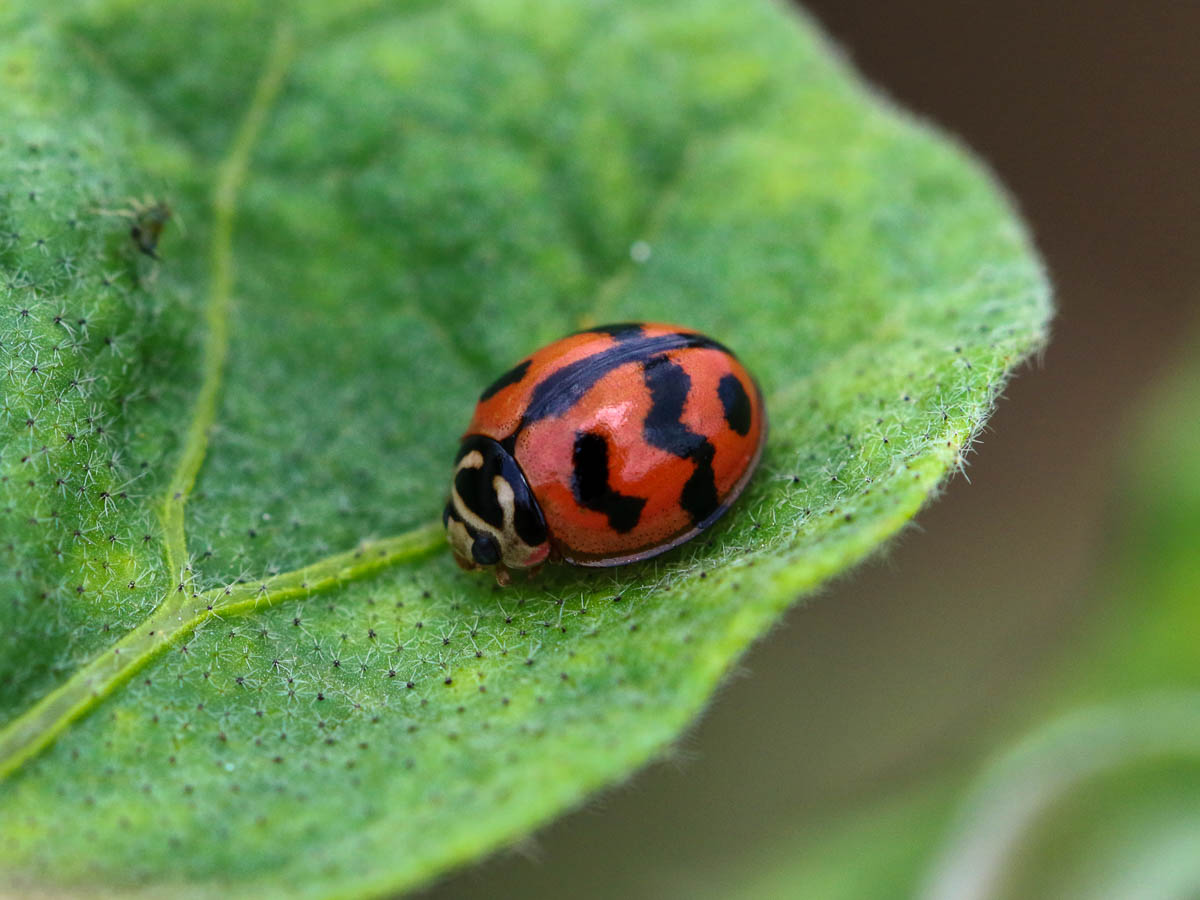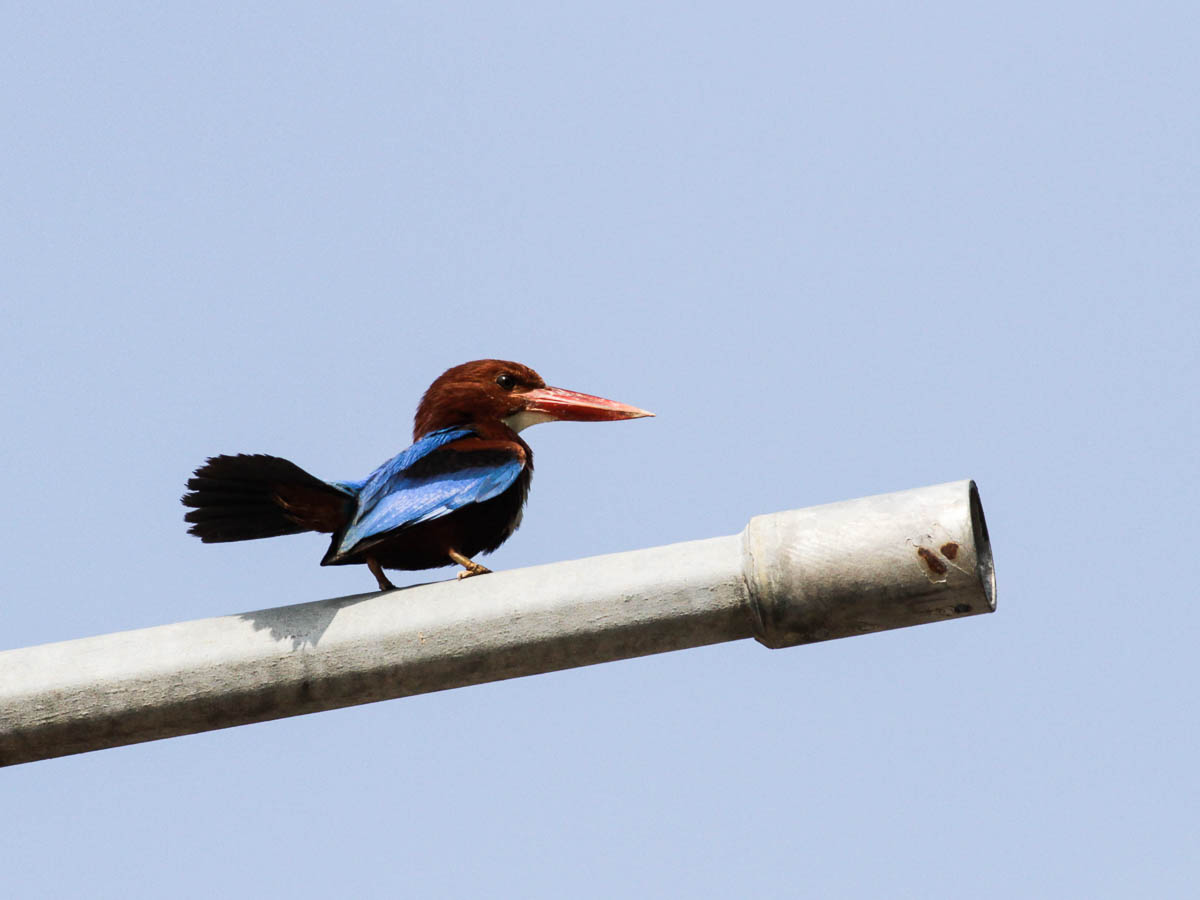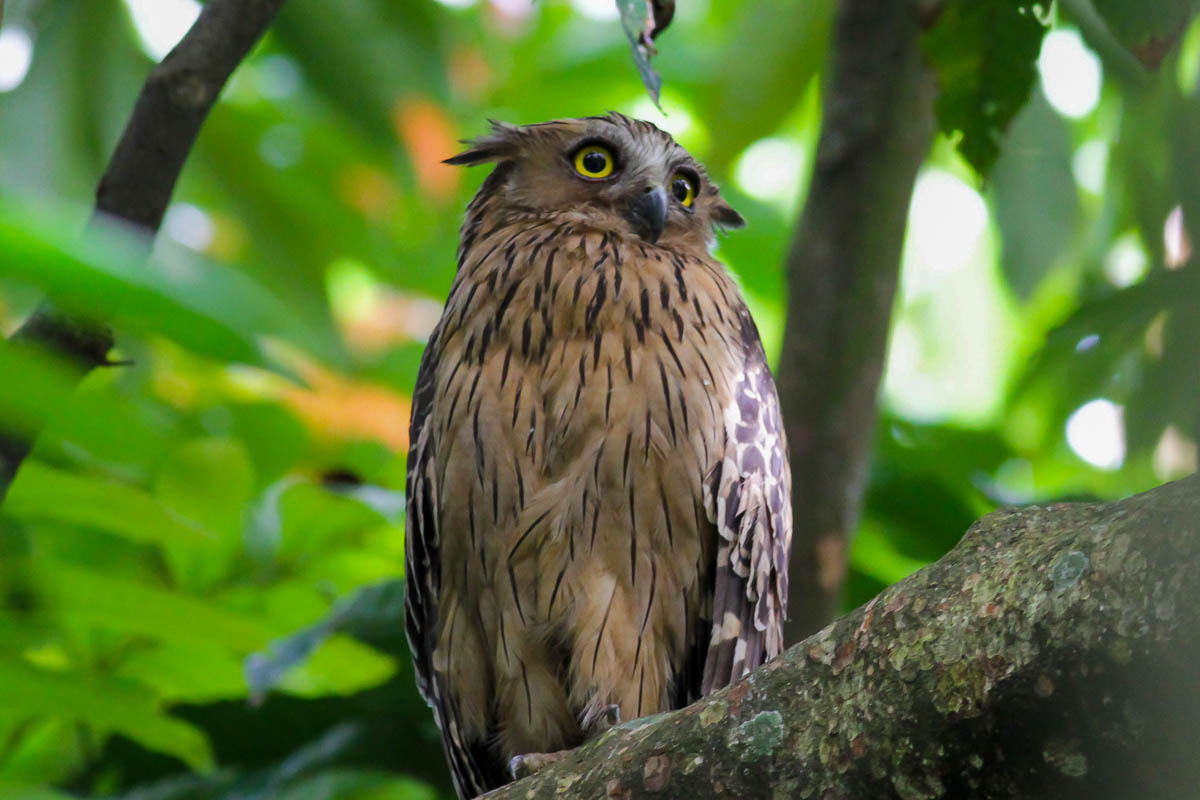Predators
All healthy ecosystems support complex food webs of predators and prey, and gardens are no exception. Garden predators can help to keep pest populations down as part of integrated pest management. Learn to recognize these garden heroes and watch them get to work!
Ladybirds

Ladybirds are small, round beetles from the order Coccinellidae and are an effective predator of Aphids, Mealy Bugs, Scale Insects, and Whiteflies.
.jpg)
Both the adults and larvae can eat large numbers of these pests, and are often found on severely infested plants. Ladybirds in Singapore are not only black and red, but can also be orange or yellow with black spots and blotches, or even fully black!
Wasps
.jpg)
Wasps come in a variety of shapes, sizes and colours, and are often mistaken for bees, which they are closely related to. In addition to being pollinators, wasps help to control garden pest populations, including Aphids and caterpillars.
.jpg)
Read our wasp advisory here.
Dragonflies

Dragonflies are dazzlingly fast predators that feed on a wide variety of insects, including common garden pests like grasshoppers, fruit flies, and mosquitoes. They are usually found near freshwater bodies like ponds and rivers as their larvae are aquatic. Their larvae are also predators that eat a wide range of prey, most notably mosquito larvae.
Birds

Birds are naturally drawn to green spaces, and are a common sight in most gardens regardless of the type. Some common species like Kingfishers, Oriental Magpie-robins, and Black-Naped Orioles will prey on larger garden pests like grasshoppers, caterpillars, snails, and slugs.

Large raptors like owls and eagles will control populations of rodents like rats and squirrels, and are an exciting visitor to any garden!
Want to learn more about birds and become a citizen scientist? Join the NParks Garden Bird Watch!

